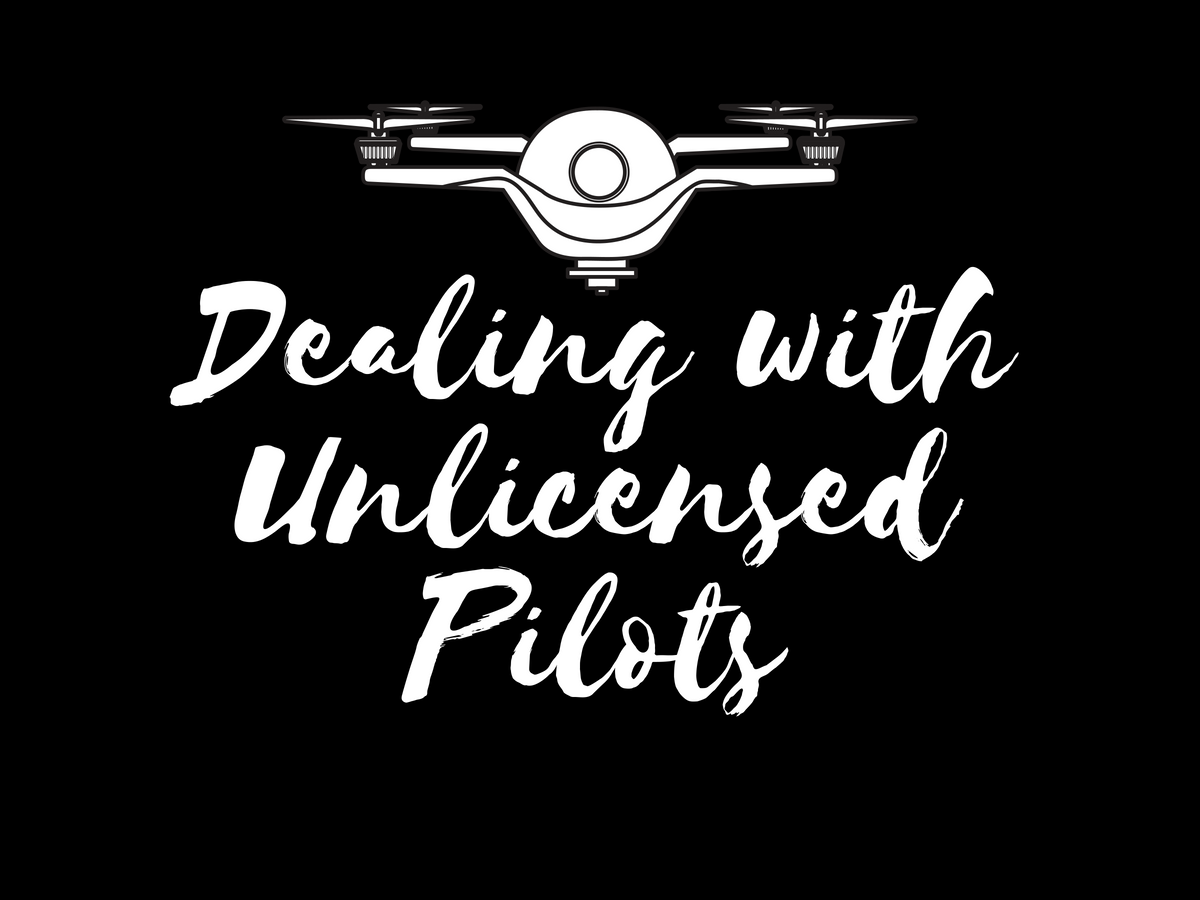Nothing gives the UAS community a bad name faster than rogue pilots breaking every FAA law imaginable and being a public nuisance in the process. What’s worse is that remote pilots who hold proper certificates are punished by the FAA’s inability to enforce its numerous laws that govern the National Airspace System (NAS).
Losing business to an unlicensed drone pilot is frustrating, and it happens quite often. Here are five things you can do to mitigate the frustration that goes along with this situation:
1. Educate the offender
With such a low barrier to entry to get a shiny new aircraft up into the air, there are literally millions of amateur pilots around the country who do not know the rules. As a knowledgeable pilot and safety advocate, you have an opportunity to educate a new pilot and prevent an accident.
2. Educate the public
Every situation with an unlicensed pilot getting work means that their client has little knowledge of the ramifications of operating a drone illegally. With tact and politeness, let them know that they are putting themselves at risk by hiring a pilot who has no authorization to fly commercially.
3. Notify the local FAA office
The local Flight Standards District Office (FSDO) is the arm of the parent agency that would get involved in any enforcement action. Therefore, if you’re aware of unlawful UAS activity, let them know about it and be sure to convey all the pertinent information.
4. Notify local law enforcement
If public safety is at risk, there is nothing wrong with notifying local law enforcement. At that point, it’s important to be a good witness with time, date(s), the specific unlawful or unsafe activity and documentation.
Also of note is that the officers will likely lack extensive knowledge when it comes to FAA drone regulations. That’s where you come in as a subject matter expert and advocate for the community.
5. Document everything
One pro tip from Drone U’s own Vic Moss is to film the unauthorized activity, and make sure you connect the aircraft to the operator by panning to the pilot and aircraft in a continuous shot.
In alerting any authorities, it will be important to have hard evidence on any activity that could be deemed illegal. More important than anything, however, is to always look out for your own safety.
Michael Jones is an FAA-licensed commercial UAS operator and chief pilot of California Aerial Media based in San Diego, California. With 20-plus flight hours in single-engine manned aircraft and hundreds more logged in UAS, aviation is one of his true passions. In addition, he is an award-winning author whose work has been featured on sites such as Yahoo!, MapQuest, About.com and Vox Media among many other publications.
Check out our Medium page for more such content
Do not forget to subscribe and Listen to Ask Drone U, the #1 drone podcast
Connect with a vibrant drone community by becoming a Drone U member






Add Your Comment